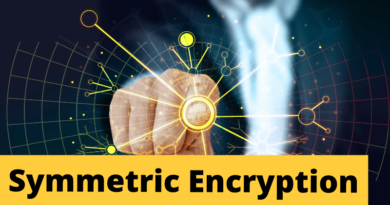What Is DES (Data Encryption Standard)?
In this tutorial, we are going to see What Is DES (Data Encryption Standard)?
On May 15, 1973, the NIST (National Institute of Standards and Technology) issued a call in the Federal Register for the creation of an encryption algorithm meeting the following criteria
- have a high level of security with a small key size used for encryption and decryption
- be understandable
- not depend on the confidentiality of the algorithm
- be adaptable and economical
- be efficient and exportable
At the end of 1974, IBM proposed “Lucifer”, which, thanks to the NSA (National Security Agency), was modified on November 23, 1976, to give the DES (Data Encryption Standard). The DES was finally approved in 1978 by the NBS. The DES was standardized by the ANSI (American National Standard Institute) under the name of ANSI X3.92, better known as DEA (Data Encryption Algorithm).
What Is DES (Data Encryption Standard)?
It is a symmetrical 64-bit block cipher, where 8 bits (one byte) are used as a parity test (to check the integrity of the key). Each parity bit of the key is used to check the integrity of the key by using odd parity, which means that each parity bit is adjusted to have an odd number of ‘1’s. The key thus has a “useful” length of 56 bits, which means that only 56 bits are actually used in the algorithm.
The algorithm consists in making combinations, substitutions, and permutations between the text to be encrypted and the key, making sure that the operations can be done in both directions (for decryption). The combination between substitutions and permutations is called the generated code.
The key is encoded on 64 bits and consists of 16 blocks of 4 bits, generally noted k1 to k16. Since “only” 56 bits are actually used to encrypt, there can be 256 (or 7.2*1016) different keys!
DES algorithm:
The basic outline of the algorithm is as follows:
- Splitting the text into 64-bit blocks (8 bytes);
- Initial permutation of the blocks;
- Splitting the blocks into two parts: left and right, called L and R;
- Steps of permutation and substitution repeated 16 times (called rounds) ;
- Recollection of the left and right parts then initial permutation in reverse.

Image source: https://commons.wikimedia.org/wiki/File:Data_Encription_Standard_Flow_Diagram.svg





